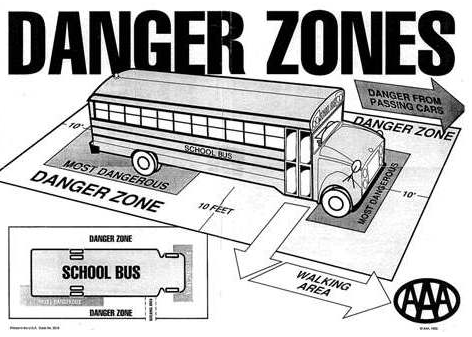Learn More about Busing Eligibility and Safety
What is and is not considered when creating a bus stop?
- Bus routing is designed with buses traveling main roads through neighborhoods and with students picked up and dropped off at central locations. Bus stops are located at corners or intersections whenever possible and are usually central to where students live.
- It is not possible to provide bus stops that are within sight of all students’ homes. We do encourage parents to be out at bus stops to promote proper bus stop behavior.
- A house stop will not be made simply because the bus goes past a student’s house. Many routes travel past students’ houses on the way to or from school. Adding additional stops negatively impacts the efficiency of a route and will often result in a route that is consistently late to school. Additionally, the higher frequency of stops made by the bus often result in impatient motorists driving around the bus causing a safety concern.
- A house stop would not necessarily be made because there is only one student at the stop. Other students may be assigned to the stop, but ride infrequently. Additionally, stops are made at corners for efficiency and to accommodate other students who may move into the neighborhood.
- Except for special education circumstances, buses are generally not routed into a cul-de-sac. A school bus requires 115 feet to safely turn and cul-de-sacs typically do not have enough room for safe access. Driving into a cul-de-sac often forces the bus to back up, which is not compliant with bus driver procedures in the State of Illinois.
- Weather conditions are not part of the criteria for a bus stop change. We encourage parents to plan appropriately on inclement weather days.
- The District does not guarantee bus stop locations from year to year. The District may change bus stop locations to ensure centralized stops and to maintain efficient routes.
How do I know if I am eligible for transportation?
Students are eligible for transportation if they live more than 1.5 miles from the school of attendance. Students may also be eligible for transportation if they live less than 1.5 miles from the school of attendance if it is within an approved hazard area. The identification and qualification of serious safety hazards are defined by the Illinois Department of Transportation in this document.
Who does Batavia Public Schools contract busing through?
We currently have a three-year contract with First Student for regular education transportation and a three-year contract with Illinois Central School Bus for special education transportation.
School Bus Safety Tips
District 101 Transportation takes great pride in their record of safety and service to the students and families of the District. These transportation pros know that both drivers and passengers have to work together in order to ensure a safe ride to school.
- Motorists who share the road with school buses need to know and follow school bus laws.
- Students who use our bus service can greatly increase their own safety by following a few easy guidelines:
- Be on time for the bus.
- Use caution when entering or exiting the bus.
- Stay on your side of the road – far from traffic.
- Wait for the bus to stop and for your driver to signal to cross.
- Check traffic in both directions – then check it again!
- Cross the street directly and do not linger in the road.
- Walk at least 10 feet in front of the bus.
- Never crawl under a school bus.

- Keep hands, feet, head in the bus at all times.
- Avoid using gadgets near buses. Headphones, cell phones, MP3 players distract from knowing when a bus is approaching.
- Remove, shorten or replace drawstrings on backpacks and clothing as they can catch in school bus doors.



